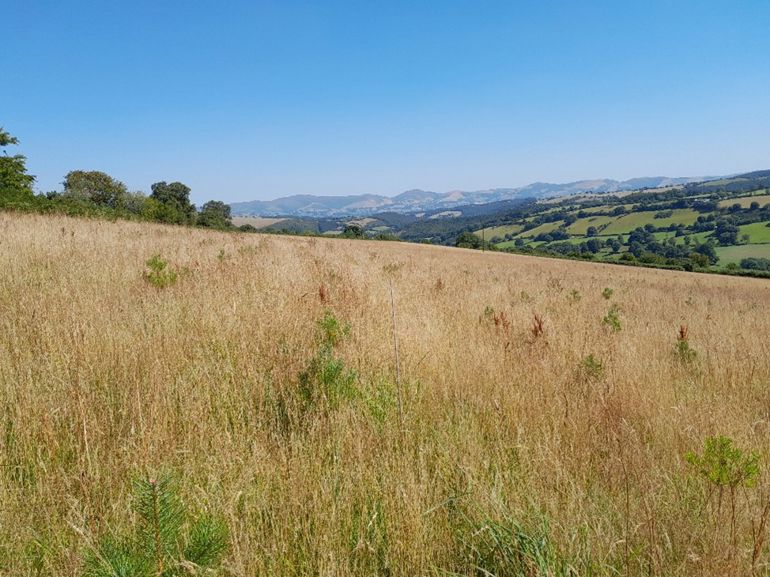Creating new and resilient woodlands

As the effects of climate change take hold across Wales, the need to create new woodland and increase tree cover is becoming increasingly urgent.
At Natural Resources Wales, we’re committed to playing our part and facing this challenge head on, through our programme to create a range of diverse new woodlands, that will help to tackle the effects of climate change and deliver a range of benefits for the environment, wildlife and local communities.
In our newest blog, our woodland creation team take us out with them to some of our woodland creation sites at Cwmbiga, Cyffylliog and Trefeglwys to explain more about the programme and the work that goes in to looking after them.
Helping new woodlands survive
When it comes to establishing a new woodland, the young trees we plant are vulnerable to a range of different threats that can have an impact on their survival – from wet and windy weather conditions to forestry pests and diseases such as the pine weevil, and even grazing from animals, such as voles, rabbits, and deer.
To help us combat this and to give the new woodland the best chance of survival, our teams replace any dead young trees during the Winter months (November to March) when the trees are dormant.
In forestry terms, this process is known as ‘Beating up’ and our teams carry out ‘Beat-up’ surveys throughout August, which allow them to determine how many new trees they need to plant and help us understand the health of the tree crops.
Understanding the condition of our woodland’s health is vital, as it helps us to identify and address any issues early on. With a changing climate and an influx of diseases and pathogens it’s important to ensure the effort and expense of woodland establishment does not go to waste.
The results from the beat-up surveys help us to determine the number of new trees we need to order from the tree nursery to plant during planting season to replace the ones that died. After two seasons of observations, it’s possible to recognise the species which are thriving at each site and those that may need a little more help. Beat up surveys provide us with an opportunity to review the success of the planting plan and make any amendments as needed as despite best efforts sometimes some species simply will not take at a site!
This year we surveyed three sites at, Cwmbiga and Cyffylliog, which were planted in 2020, and Trefeglwys which was planted in March 2022.
Cwmbiga
We’re really pleased with how this site is developing. The stocking density is now at around 90% of what we hope to achieve. We were able to see trees poking their heads above the grass with some of the broadleaf species approaching around 2m in height. We also planted Sitka spruce and Douglas fir, and both are looking very happy!

Cyffylliog
At this slightly more exposed location we planted four conifer species. Some, such as the Norway spruce and Sitka spruce are coming along well. We also planted Noble fir and Scots pine. The Noble fir is a bit of a slow starter with quite a lot of failures, however after a year of looking a bit disgruntled the Scots pine are now coming along nicely. As this is our second round of beating up, we are considering replacing the unsuccessful Noble fir with a different pine species, which won’t compete for light with the established trees. This will add further diversity to the woodland making it more resilient. The broadleaves are all coming along well!
Trefeglwys
When conducting a Beat-up survey, we generally count the number of dead or missing trees in a plot, but this year at Trefeglwys the situation was reversed, and we counted the living ones. For any forester or land manager this is a disheartening experience. It was evident that the extremely hot, dry weather this spring and summer had done for the newly planted trees. What remained, exhibited the tell-tale signs of heat stress. Despite best efforts to give our trees a good start we cannot control the weather. The upshot being this site will be heavily beaten up this winter to compensate for the heavy losses incurred.
It’s difficult to look at the crop failure and not consider the impact of our weather on establishment rates. The effects of climate change are so apparent and future weather events predicted to become increasingly extreme, hotter temperatures and increased rainfall, woodland creation can help mitigate through increased carbon sequestration and reducing the severity of flood events.
